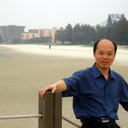Seasonal variation of red clover (Trifolium pratense L., Fabaceae) isoflavones and estrogenic activity.
キーワード
概要
Red clover (Trifolium pratense L., Fabaceae) dietary supplements are currently used to treat menopausal symptoms because of their high content of the mildly estrogenic isoflavones daidzein, genistein, formononetin, and biochanin A. These compounds are estrogenic in vitro and in vivo, but little information exists on the best time to harvest red clover fields to maximize content of the isoflavones and thus make an optimal product. Samples of cultivated red clover above-ground parts and flower heads were collected in parallel over one growing season in northeastern Illinois. Generally, autohydrolytic extracts of above-ground parts contained more isoflavones and had more estrogenic activity in Ishikawa endometrial cells as compared with extracts of flower heads. Daidzein and genistein contents peaked around June to July, while formononetin and biochanin A contents peaked in early September. Flower head and total above-ground parts extracts exhibited differential estrogenic activity in an Ishikawa (endometrial) cell-based alkaline phosphatase induction assay, whereas nondifferential activity was observed for most extracts tested in an MCF-7 (breast) cell proliferation assay when tested at the same final concentrations. Ishikawa assay results could be mapped onto the extracts' content of individual isoflavones, but MCF-7 results did not show such a pattern. These results suggest that significant metabolism of isoflavones may occur in MCF-7 cells but not in Ishikawa cells; therefore, caution is advised in the choice of bioassay used for the biological standardization of botanical dietary supplements.


